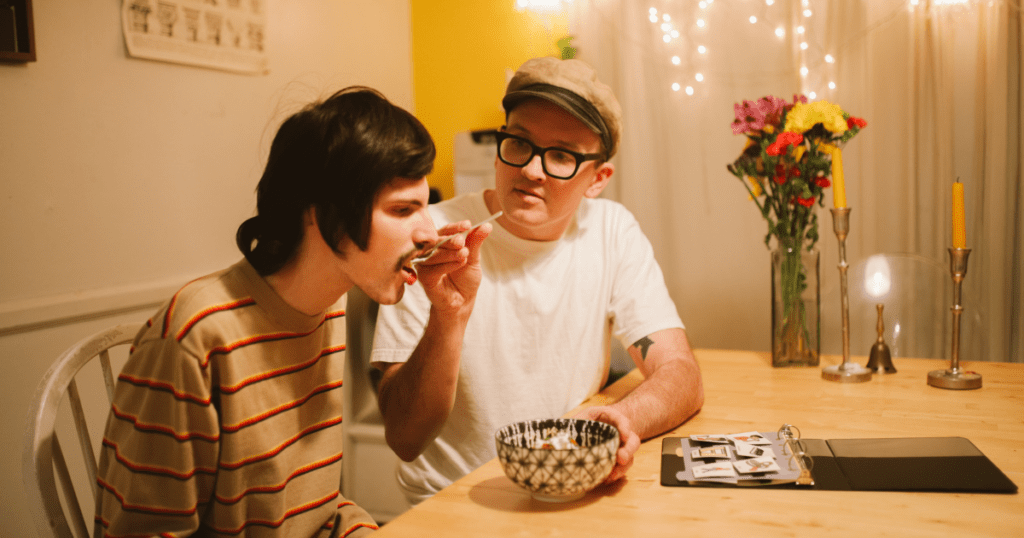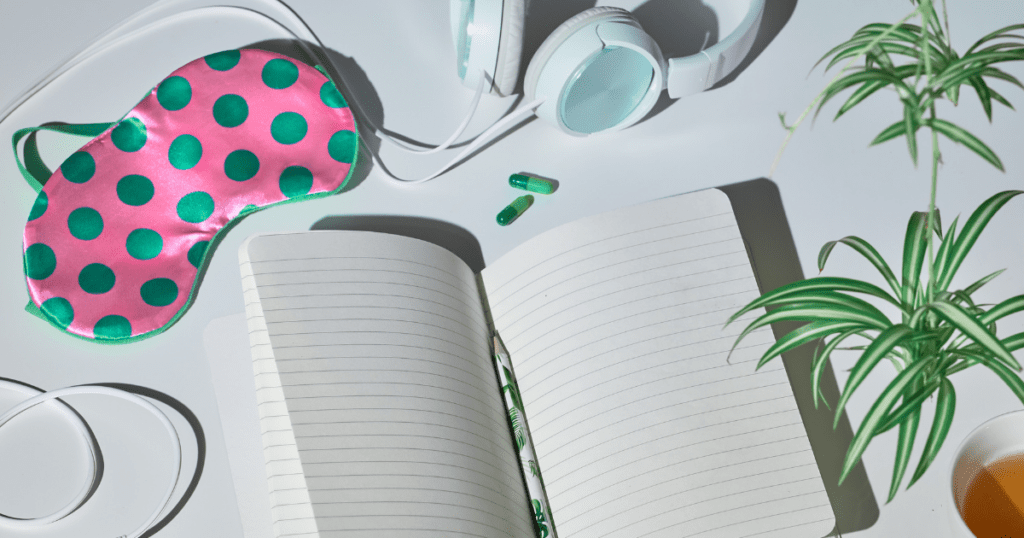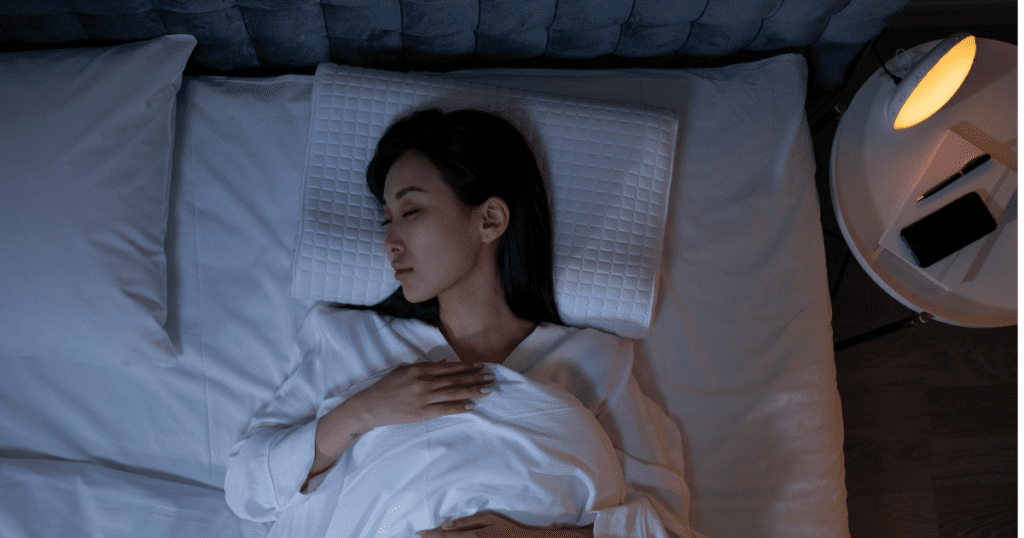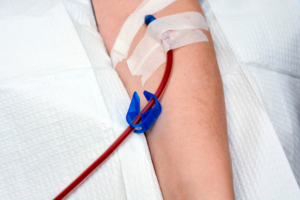April 2nd is World Autism Awareness Day. Neurodivergent people, like autists and people with ADHD, have a unique set of needs to function optimally in life — including special attention and support for self-care, health, and wellness. Here we’ll dive into what lifestyle and healthcare tips can help improve the well-being of autistic people and those who love and care for them.
What is autism?
Autism is currently defined by the Diagnostic and Statistical Manual of Mental Disorders, 5th Edition (DSM-5) as a neurodevelopmental disorder characterized by early onset differences in
- Sense-making
- Social interaction and communication
- Focus on areas of interest (usually quite narrow)
While autism shows visible differences in the physical structures of the brain, there’s no clear consensus on what precisely causes autism, it can be linked to genetics and epigenetic factors, like environment, experiential or other factors.
Just as there are a number of possible contributing factors to the development of autism, there is a wide range of possible ways for symptoms of autism to manifest. To further complicate the differential diagnosis of autism, symptom manifestation can change daily on an individual level and vary from population to population. This can make determining support needs all the more difficult, not just for autistic people, but for the caregivers in their lives as well.
Symptoms of autism
Through portrayal in popular media of autistic characters like Sheldon Cooper from the Big Bang Theory and Raymond Babbitt from Rain Man as well as an almost exclusive research focus on the autistic experience of boys under 10 years old, society’s collective understanding of autism usually includes:
- Thinking in extremes and black-and-white thinking
- Strict adherence to routine
- Intense focus on objects and concepts often referred to as special interests (such as trains, train schedules, and other related information)
Autistic boys make up a large part of the collective understanding of what autism looks like.
However, this is only part of the possible constellation of symptoms in the lived autistic experience. As a consequence of this narrow view of autistic symptoms, common symptom manifestations often seen in women and girls are missed, both in research and in their lives. The male-to-female diagnosis ratio for autism is roughly 4:1. In addition to being more likely to go undiagnosed, autistic females are often misdiagnosed.
Another factor in misdiagnosis and late diagnosis of autism in people is differences in socialization and social expectations. Whereas male autists are generally referred to as “little professors,” many female and non-binary autists are often characterized as “little psychologists.” In research focused on the autistic phenotypes observed in females, an intense focus on understanding human behavior has frequently been noted, which can lead to an early learned ability to camouflage or mask their symptoms — an endless effort to blend in for both diagnosed and undiagnosed autists.
Masked vs. unmasked autism
Because of a heightened ability to mask, especially in social situations, the struggles of autistic people who don’t fall into the more widely-known and accepted picture of autism can be overlooked, sometimes for years or decades.
Unfortunately, this can lead to significant pre-diagnosis difficulties for people diagnosed later in life and earlier misdiagnoses of anxiety, depression, Borderline Personality Disorder (BPD), Obsessive Compulsive Disorder (OCD), among others. While people who can mask autistic traits more easily succeed in blending into a society not built to support their needs, this masking comes at a cost: Autistic burnout.
Autistic burnout is the exhaustion caused by masking — it takes a lot of work to seem like one isn’t struggling at any given time! This is especially true in situations where the requirement for resources, energy, and strength in an autist’s life outweigh their ability to meet those requirements.
The energy expended trying to meet the demands of typical life can lead to:
- Exhaustion
- Inability to or disinterest in participating in anything resembling a demand, even if the activity is something one usually finds pleasure in
- Aggravation of possible co-occurring conditions like anxiety, depression, or suicidal ideation
For autists and those who care for them, a significant goal for life quality is limiting the stress and unintended costs of masking. This might include:
- Being aware of their limits and meeting their needs
- Creating accessible environments and relationships where autistic people can be safely unmasked — where they can stim, explore special interests freely, approach transitions slowly, and control sensory inputs easily
- Regularly checking in on parts of one’s wellness that are potentially deprioritized due to the energetic cost of masking — hydration, adequate nutrition, hygiene, and sleep, especially.

Wellness tips for autists and their caregivers
Though the autistic experience is not a monolith, and there are no one-size-fits-all interventions that will be helpful for all autists, a number of health-related concerns have been observed to apply to many autistic people.
Common autistic health concerns
- Sedentary lifestyle compared to neurotypical peers
- Higher incident rates for cardiovascular disease
- Nutrient-deficiency
- High blood pressure
- Higher rates of anxiety and burnout, which can lead to feelings of decreased satisfaction in life
- Decreased ability for those capable of masking to do so
Other commonalities, often with no readily-identifiable medical cause, include:
- Gastrointestinal issues
- Headaches and migraines
- Difficulties with sleep
- Autoimmune disorders
Studies have shown a number of interventions that could possibly be helpful for some, if not all, of those on the autism spectrum.

Precise, individual recommendations for autists
ViveWell offers 3 precision genetic tests that can inform specific interventions for autism according to an individual’s DNA. Genes are analyzed against a robust set of research to offer detailed dietary, environmental, and lifestyle advice.
The Neurodevelopmental Report
This report is the most complete analysis of neurodivergence. The Neurodevelopmental Report combines the Mental Wellness Report (below) with additional panels, making it ideal for addressing neurodevelopmental issues like Autism Spectrum Disorder, Asperger’s, and PANDAS/PANS. Drawing from a successful pilot study in Australia, the report helps clinicians identify root causes and create personalized health plans. Focusing on contributing factors to various neurodevelopmental conditions, the report covers pathways such as Autism Spectrum, inflammation, gluten intolerance, anxiety, and ADHD. Experience the benefits of this comprehensive report for enhanced understanding and targeted interventions.
A study in the International Journal of Molecular Science validated the use of a genomically targeted approach to neurodevelopmental disorders. For example, the SHANK3 gene is associated with intellectual disability and neurological difficulty. However, in studying carriers of the gene, researchers found that many people who carried the gene but had milder or no expression of disability had lifelong diets rich in zinc, indicating that SHANK3 carriers can likely improve their symptoms and complications in their children by eating a high-zinc diet, especially during key developmental periods in utero and throughout childhood.
The Mental Wellness Report
This report emphasizes the importance of understanding and balancing brain neurotransmitters for a happy and productive life. By examining how your DNA affects mental wellness, the report can help optimize attention, stress response, and reduce cravings. Analyzing over 250 clinically significant gene variants across 20 topics enables clinicians to create individualized health plans for improved quality of life. Key panels include addiction, ADHD stimulant response, anxiety, attention, obsession, brain nutrient panels, detoxification, hormones, homocysteine, methylation, and endocannabinoid response. Invest in your mental well-being and achieve health goals with this insightful report.
The Brain Optimization Report
Our final neurological genomics report offers a comprehensive approach to improving cognition, memory, and overall brain health. Explore reversible and modifiable causes of memory loss, as well as over 500 clinically significant gene variants. Trusted by medical professionals, this report is backed by extensive research and provides a highly individualized health plan. Key panels focus on cognition, inflammation, brain ischemia, nutrients, detoxification, hormones, and mitochondrial factors. Unlock your brain’s full potential and enhance your quality of life with this invaluable resource.
Book a free discovery session today to learn more about precision gene testing for neurological health.

Creative habit-stacking for problem activities
Autistic people often struggle with one or more daily tasks tied to self-care — sometimes it’s hygiene, sometimes it’s stopping a focused activity to eat, drink, pee, or sleep. Other times, the sensory aspects of an activity that neurotypical people take for granted cause autistic people to avoid it altogether, including brushing their teeth, showering, or even falling asleep. For these kinds of activities, creativity and a technique called habit-stacking may help.
What is habit-stacking?
Habit-stacking is the understanding and practice of how the brain naturally tends to group certain activities — like drinking coffee and reading the news — then, leveraging that tendency to introduce new tasks to help form better habits.
This is a helpful tool for anyone, but for autists who often struggle with autistic inertia, demand avoidance, and transitions, it can make taking care of essential tasks easier.
How to use habit-stacking
Importantly, unless necessary for their safety, try to avoid forcing any activity on an autistic person and compelling them to mask. This leads us to the first step in effective habit-stacking for autism — get creative!
- Try to understand the ultimate goal of the activity.
- Work to understand the trigger for the autistic person.
- Brainstorm alternatives that avoid or reframe the trigger.
- Link the activity to another regular, enjoyable activity.
For example, showering is an everyday activity that some autists struggle with. The goal is to get clean. The trigger is often sensory in nature — water temperature, the way the water drops hit the body or head, the smell of the soap, the slipperiness of the basin, the sound of the water falling and splashing, the sensation of being naked before or after the shower, the feeling of wetness, etc. Non-sensory concerns, like transition and demand avoidance, can also be at play. Triggers are as diverse as autistic people themselves.
Once you understand the trigger(s), imagine alternatives that meet the goal while managing or eliminating triggers. For example, wipes and warm damp clothes can be used almost anywhere, addressing both sensory and some transition concerns. Towels and rooms can be warmed to limit overstimulation from temperature change.
While creativity often addresses many sensory concerns, issues with transitions and demand avoidance may be helped more by habit-stacking. For example, if you struggle with autistic inertia — stopping one activity (work or gaming) to transition to another (drinking water) — try placing the new activity close to or in the context of the primary activity, so that one regular activity can trigger another. This may look like having your preferred water on-hand and drinking whenever an activity you regularly perform is completed. For example, you may decide to drink 5 sips of water every time you finish writing a message to a coworker or before the level on your game resets.
Especially when you’re working with children, involve them as much as possible to collaborate on solutions. The ownership they feel helps with compliance and follow-through.
Learn more about habit-stacking.

Sleep tips
For difficulties with sleep, it can take some work to create a routine and space where an autist can comfortably rest. As a priority, address these concerns first rather than only relying on supplements or medicines. Here are some important considerations:
- Make sure you have enough time to transition to sleep — sometimes, hours of quiet time are needed
- Keep to the same routine
- Manage or reduce sensory stimulation leading up to and while sleeping
- Explore to understand the ideal sleep environment for you or your child — for some autists, this looks like complete dark and a fan blowing for white noise, while for others, it includes some gentle nightlights and a weighted blanket. Each autist is different.
Tip: Don’t overlook the power of small and minute details, especially in people who can’t easily communicate their needs. Socks, textures, sheets being tucked too tight, LED lights on electronics, loud trucks driving outside, etc., can all be overstimulating to neurodivergent people.
Once you have your routines and space honed, some supplements may help improve sleep further. For example, some have seen an improvement using non-pharmaceutical methods such as melatonin, 5-HTP, and valerian root.
However, while these solutions may help in the short term, it’s essential to understand if there is any underlying concern, like dietary insufficiency, gut dysbiosis, or hormonal disbalances. If you have tried everything and believe there may be something keeping you or your child from a restful sleep, we can help investigate and uncover any issues.
Note: While some studies have collected reports from parents and caregivers of autistic people utilizing sedative antihistamines such as hydroxyzine and chlorphenamine, this should be avoided for bringing circadian rhythms into a more healthy balance. We can work with you and your family to help develop a safe and sustainable treatment plan.

Gut health tips
Gastrointestinal issues are another commonly reported part of the autistic experience, and there have been many studies conducted with few hard conclusions drawn about the widespread impact of specialty diets, such as gluten-free and casein-free diets, gluten-free diets, and the ketogenic diet. Some studies have found a reported decrease in social difficulty when autists and their caregivers utilized a gluten-free diet specifically. Improvements in cognitive function and reduction in social difficulties were noted by adopting the ketogenic diet. More research needs to be done.
However, individualized digestive health treatments may be the best way forward. ViveWell’s precision genetic testing listed above can help pinpoint particular areas of concern as to the incidence of gastrointestinal issues and nutrient metabolism. These advanced reports aggregate specific dietary and lifestyle interventions uncovered for each gene by the latest scientific research. As a result, each person gets a customized health plan catered to their unique body.
As always, before you dive in with any particular diet, discuss the change with a qualified healthcare provider who will be able to support and guide you toward relief from gut issues as well as ensure you and your family get adequate nutrition.
For more general information about gut health, read our article on diet and the brain-gut connection.

Mental health tips
Some autists benefit from the integration of mindfulness techniques. Mindfulness offers autistic people and their caregivers a chance to stay anchored in the moment, which in turn can lead to increased:
- Ability to emotionally regulate and coregulate
- Tolerance for stressful situations
- Satisfaction in life
Popular mindfulness tools and training
Mindfulness is more accessible now than it ever has been. If you or the autists you love tolerate the sensory input, there are a number of apps that can guide you to mindfulness practice. If digital tools are over-stimulating, books, music, and even white noise are available and can be very calming and grounding.
Here are some recommended resources to explore:
- Stimming as a form of mindfulness
- The Medito App — free forever mindfulness app
- The Aura App — a variety of coaches and resources, with a free version
- The Headspace App — a marketplace leader with fun cartoons (Also offers resources via Netflix!)
- The Neurodivergent Friendly Workbook of DBT Skills
- The teachings of Thich Nhat Hanh, the Father of Mindfulness
- The autism-informed Awakening Curriculum by Pernille Damore, ND
Closing thoughts
The potential for regenerative and precision medicine to support neurodivergent health is considerable. We are motivated to support autists and their families to help you feel better. Contact our office in Wheat Ridge, CO to get started on your personalized health journey.






